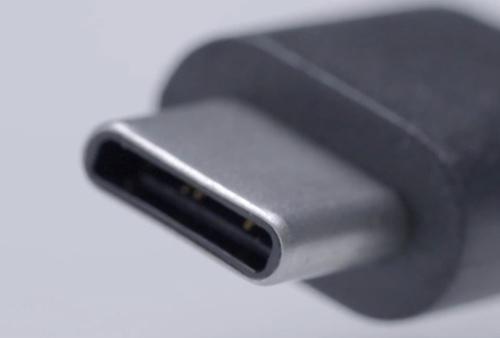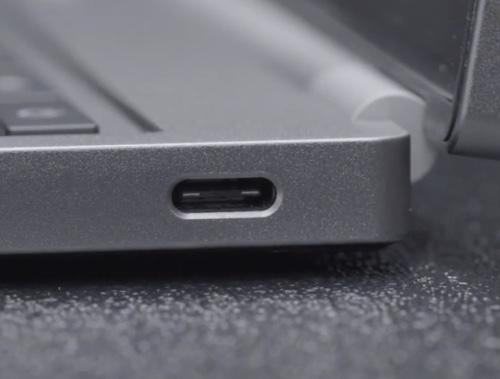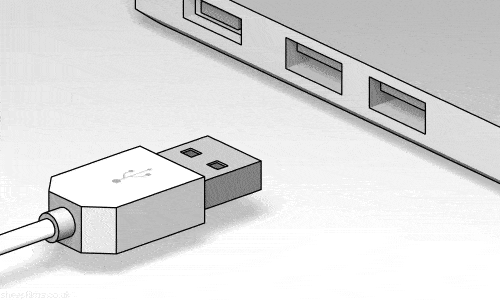The Upcoming USB C Cable Is About to Make Your Life Way Easier

(Apple’s new MacBook)
Apple’s
new MacBook is turning a lot of heads, thanks to its superslim design
and reimagined keyboard. But the real story, for Mac and PC owners
alike, is the inclusion of a new kind of USB port, USB Type-C.
OK,
it might not be the sexiest topic –– USB C could use a rebranding, for
sure –– but hear me out. This humble port, which you can already try out
on Google’s recently released Chromebook Pixel, is going to change the way we use everything from smartphones and tablets to laptops and desktop computers.
You
know that rat’s nest of tangled wires you keep bundled in your bag or
your desk drawer? A single USB C cable could replace all of them.
Yeah: One cable to rule them all.
Now you’re interested, right? Here’s how it works.
A new kind of standard
You use USB ports every day. Whether it’s connecting your mouse to your desktop or charging your smartphone, USB is everywhere.
The
most common form is the USB Type-A standard, the large-size connector
on the side of your laptop or desktop. Then there’s the microUSB Type-B
standard, which is what you find on most smartphones and tablets. And
while those are convenient, they could certainly be faster, smaller, and
easier to use.
USB
Type-C, or just Type-C, is a new standard that’s completely different
from the cables and connectors you’ve previously used.
According
to the USB Implementers Forum, the group in charge of setting USB
standards, Type-C can not only transfer small amounts of data and charge
phones and tablets like current USB standards do, Type-C can also be
used to charge something as large as a laptop and even stream video.
It
can also transfer huge amounts of data at a mind-blowing 10 gigabits
per second; that’s twice as fast as the older USB 3.0 standard on your
laptop or the microUSB your smartphone uses.
That’s why Apple is able to use Type-C as the only connector on its new MacBook: It
can do everything all of those older ports on your current computer can
do. And it’s really small, too: about as thin as a standard microUSB
connector.
Charging ahead
But it’s Type-C’s ability to charge a wide array of devices that is truly impressive.
While
most smartphones and tablets use microUSB connectors for charging and
transferring data, the iPhone and iPad use Apple’s specially made
Lightning connector.
Laptops,
however, use a wide variety of chargers. That means, if you’re going on
a business trip, you need to bring a charger for your phone and tablet
and another for your laptop.

(Google)
Type-C, however, has been designed so that it can power smartphones, tablets, and laptops. That means if you buy a laptop that is USB C compatible, you’ll need just one charger for all of your devices.
Techies
out there might be wondering how a charger designed for a laptop can
also charge a smartphone without blowing out its battery. The answer is
that your phone, or any other Type-C device, can talk to the charger to determine how much power it needs. The charger then sends the correct amount of power to the device without damaging it.
You’ll even be able to charge your MacBook using the charger that comes with your smartphone, albeit at a much slower rate.
That’s
an incredible benefit to both companies and consumers. Companies win
out by having a single charger and cable for all of their devices,
cutting down on packaging and materials. Consumers win by only having to
carry a single charger for everything. And if you lose your laptop
charger, you can just go to the store to pick up a new one, rather than
having to get one sent to you by the manufacturer or taking your chances
on some third-party charger.
Type-C
also offers something called bidirectional charging. Have you ever had
100 percent battery life on your tablet and 0 percent on your phone, and
wished you could just transfer battery power from the tablet to the
phone? With Type C, you’ll be able to do just that. You’ll not only be
able to charge your laptop, smartphone, or tablet from the wall, you’ll
be able to charge it from other devices, too. So you could use one
laptop to charge another, or a phone to charge a tablet, or an MP3
player to charge a toaster (if it can get charged via Type-C). That’s
pretty sweet.
Flip’n good

(Google’s Chromebook Pixel)
One
last thing: Outside of its charging capabilities, Type-C is also
completely reversible –– just like Apple’s own Lighting connector. That
means you can say goodbye to fumbling with your charger for 20 minutes
before you finally figure out which way to plug it into your computer.

In fact, Type-C is even more reversible than the Lighting connector, because you can plug either end into your device.
That
alone is reason enough for most people to jump onboard the Type-C party
bus (admittedly not the most exciting bus). But combining that with the
aforementioned benefits means that Type-C is a genuine revelation in
terms of tech convenience.
It
remains to be seen whether a company like Apple will ditch all of its
proprietary ports (Lighting and Thunderbolt) for USB Type-C, but the
fact that Type-C is the only connector included on the new MacBook is
telling.
Of
course, the company did just announce its new Thunderbolt 2 standard,
so it could be a while before we have one universal cord for all of our
devices.
Where you can get it
Right now the only devices using Type-C are Google’s new Chromebook Pixel,
Apple’s recently announced MacBook, Nokia’s N1 tablet, and a few
storage devices. The standard has yet to be introduced as part of a
smartphone, but you can bet it will make its way into smartphones,
tablets, and laptops soon.
We can’t wait.

No comments:
Post a Comment
Leave you comment here...